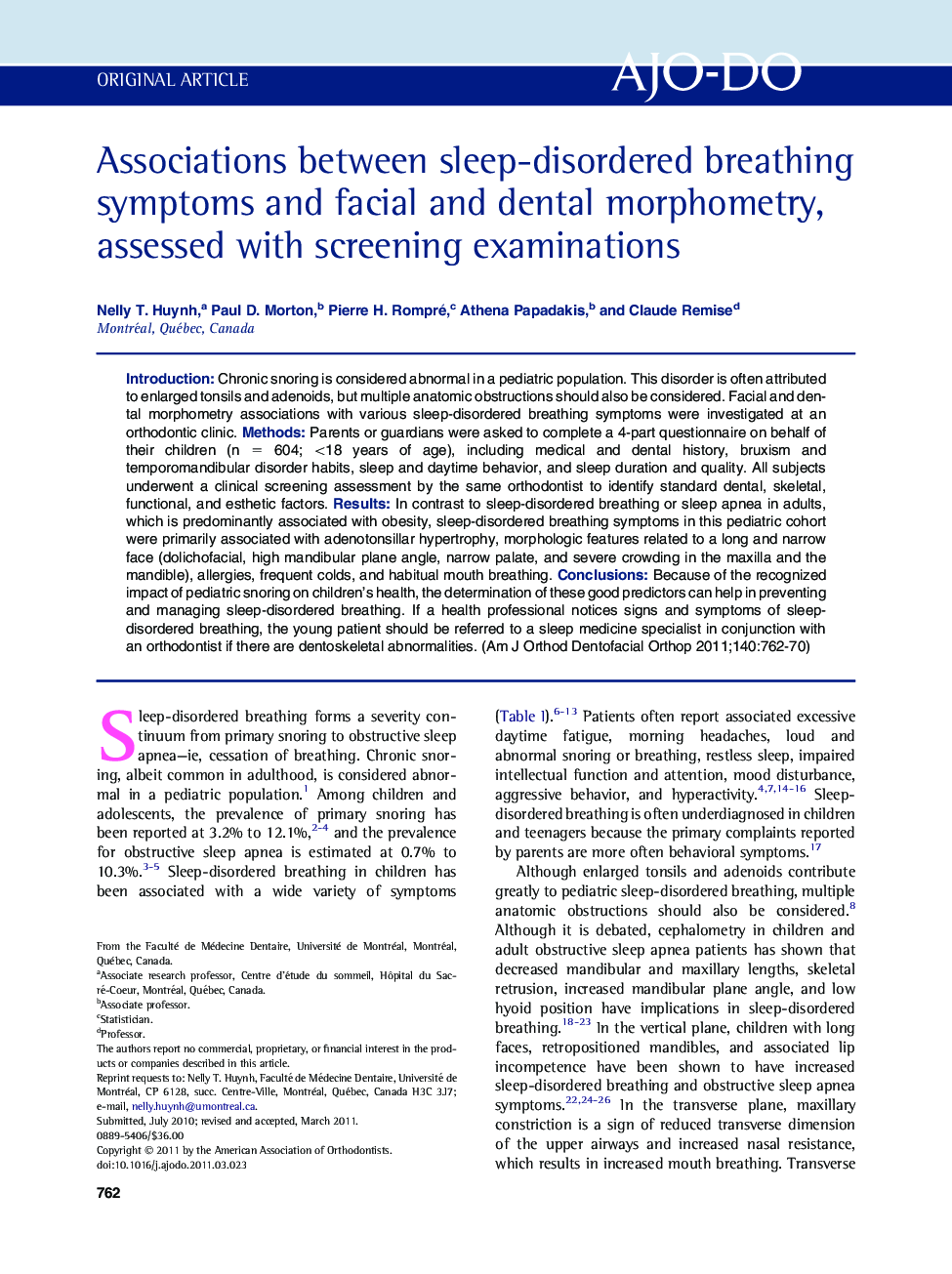| Article ID | Journal | Published Year | Pages | File Type |
|---|---|---|---|---|
| 3117165 | American Journal of Orthodontics and Dentofacial Orthopedics | 2011 | 9 Pages |
IntroductionChronic snoring is considered abnormal in a pediatric population. This disorder is often attributed to enlarged tonsils and adenoids, but multiple anatomic obstructions should also be considered. Facial and dental morphometry associations with various sleep-disordered breathing symptoms were investigated at an orthodontic clinic.MethodsParents or guardians were asked to complete a 4-part questionnaire on behalf of their children (n = 604; <18 years of age), including medical and dental history, bruxism and temporomandibular disorder habits, sleep and daytime behavior, and sleep duration and quality. All subjects underwent a clinical screening assessment by the same orthodontist to identify standard dental, skeletal, functional, and esthetic factors.ResultsIn contrast to sleep-disordered breathing or sleep apnea in adults, which is predominantly associated with obesity, sleep-disordered breathing symptoms in this pediatric cohort were primarily associated with adenotonsillar hypertrophy, morphologic features related to a long and narrow face (dolichofacial, high mandibular plane angle, narrow palate, and severe crowding in the maxilla and the mandible), allergies, frequent colds, and habitual mouth breathing.ConclusionsBecause of the recognized impact of pediatric snoring on children’s health, the determination of these good predictors can help in preventing and managing sleep-disordered breathing. If a health professional notices signs and symptoms of sleep-disordered breathing, the young patient should be referred to a sleep medicine specialist in conjunction with an orthodontist if there are dentoskeletal abnormalities.
